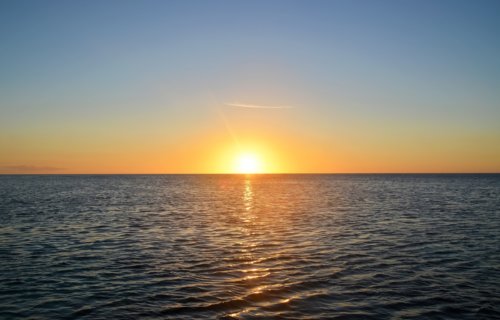
PERTH, Australia — Earth sits apart from every other planet in our solar system due to its tremendous amount of liquid water. So how did it all get here? Did a giant glacier melt? Did a huge asteroid carrying H2O crash land here billions of years ago? A new study finds there may be a very surprising answer to this question. Researchers from Curtin University say the source of water on the Earth may actually be the Sun.
A team from Curtin’s Space Science and Technology Centre discovered that solar winds created water on the surface of dust grains, which asteroids ferried to Earth during the formation of the solar system. Solar winds contain charged particles released by the Sun which are largely made of hydrogen ions. Earth’s oceans cover over 70 percent of the planet’s surface. This has left scientists with a mystery to solve for many years.
“An existing theory is that water was carried to Earth in the final stages of its formation on C-type asteroids, however previous testing of the isotopic ‘fingerprint’ of these asteroids found they, on average, didn’t match with the water found on Earth meaning there was at least one other unaccounted for source,” says Professor Phil Bland in a university release.
“Our research suggests the solar wind created water on the surface of tiny dust grains and this isotopically lighter water likely provided the remainder of the Earth’s water,” the study author adds. “This new solar wind theory is based on meticulous atom-by-atom analysis of miniscule fragments of an S-type near-Earth asteroid known as Itokawa, samples of which were collected by the Japanese space probe Hayabusa and returned to Earth in 2010.”
“Our world-class atom probe tomography system here at Curtin University allowed us to take an incredibly detailed look inside the first 50 nanometers or so of the surface of Itokawa dust grains, which we found contained enough water that, if scaled up, would amount to about 20 liters for every cubic meter of rock,” Prof. Bland explains.
This is good news for astronauts
Curtin graduate Dr. Luke Daly notes that the discovery is actually an important one for future astronauts. Since space exploration will mean taking a limited amount of supplies along for the ride, scientists need to come up with a way of replenishing vital essentials (like water) during long space missions.
“How astronauts would get sufficient water, without carrying supplies, is one of the barriers of future space exploration,” says Dr. Daly, who is now at the University of Glasgow.
“Our research shows that the same space weathering process which created water on Itokawa likely occurred on other airless planets, meaning astronauts may be able to process fresh supplies of water straight from the dust on a planet’s surface, such as the Moon.”
The findings are published in the journal Nature Astronomy.
